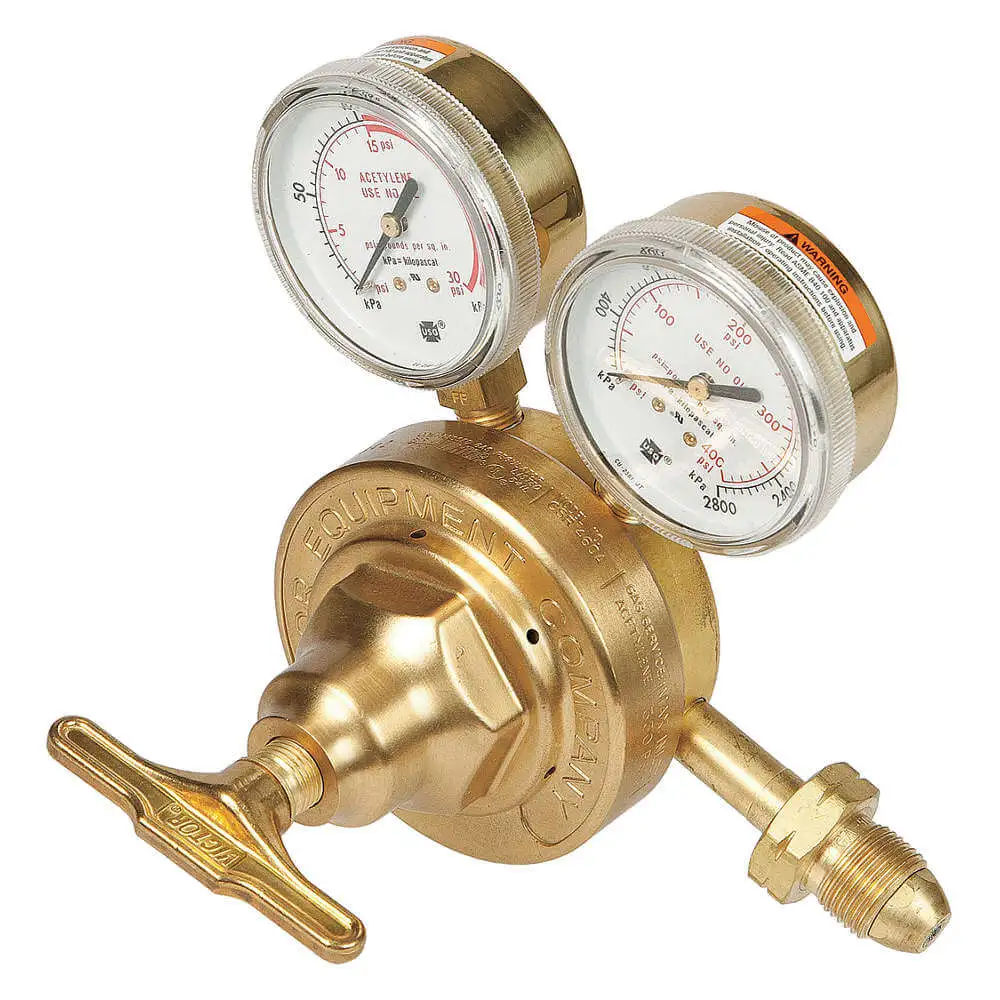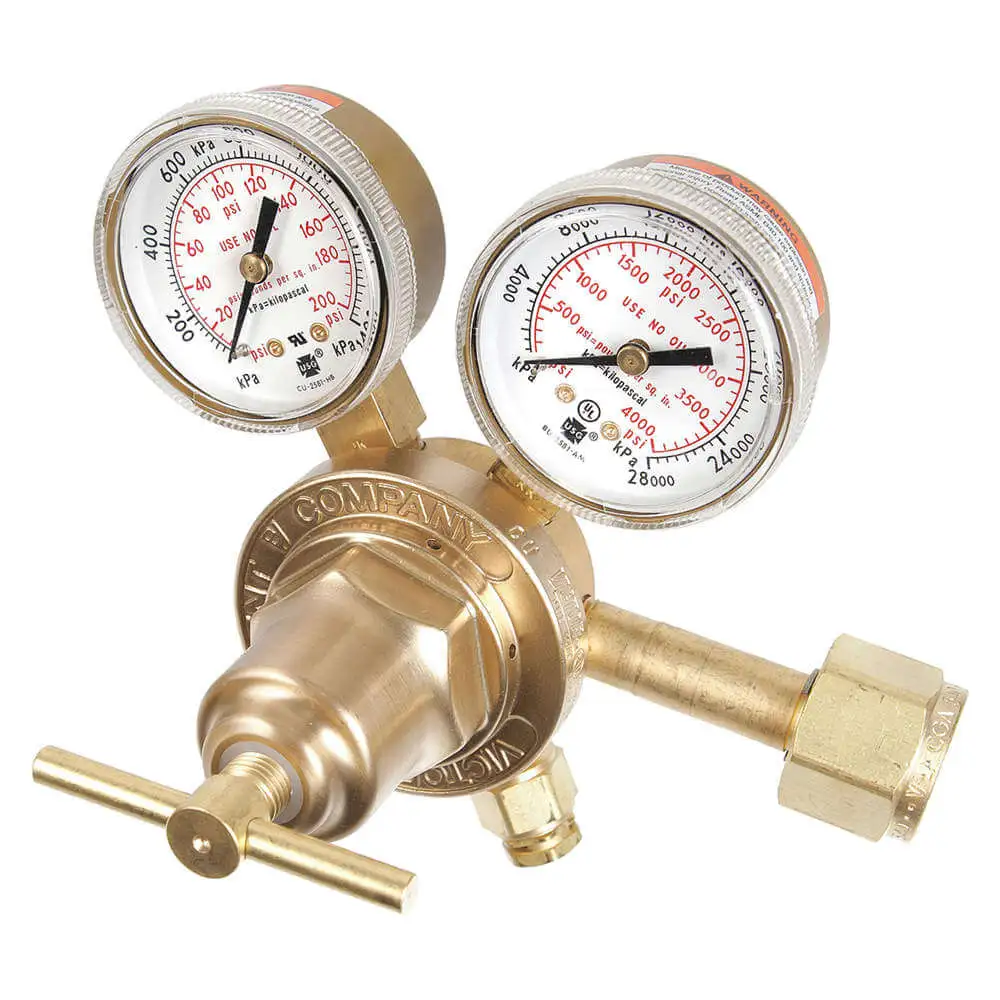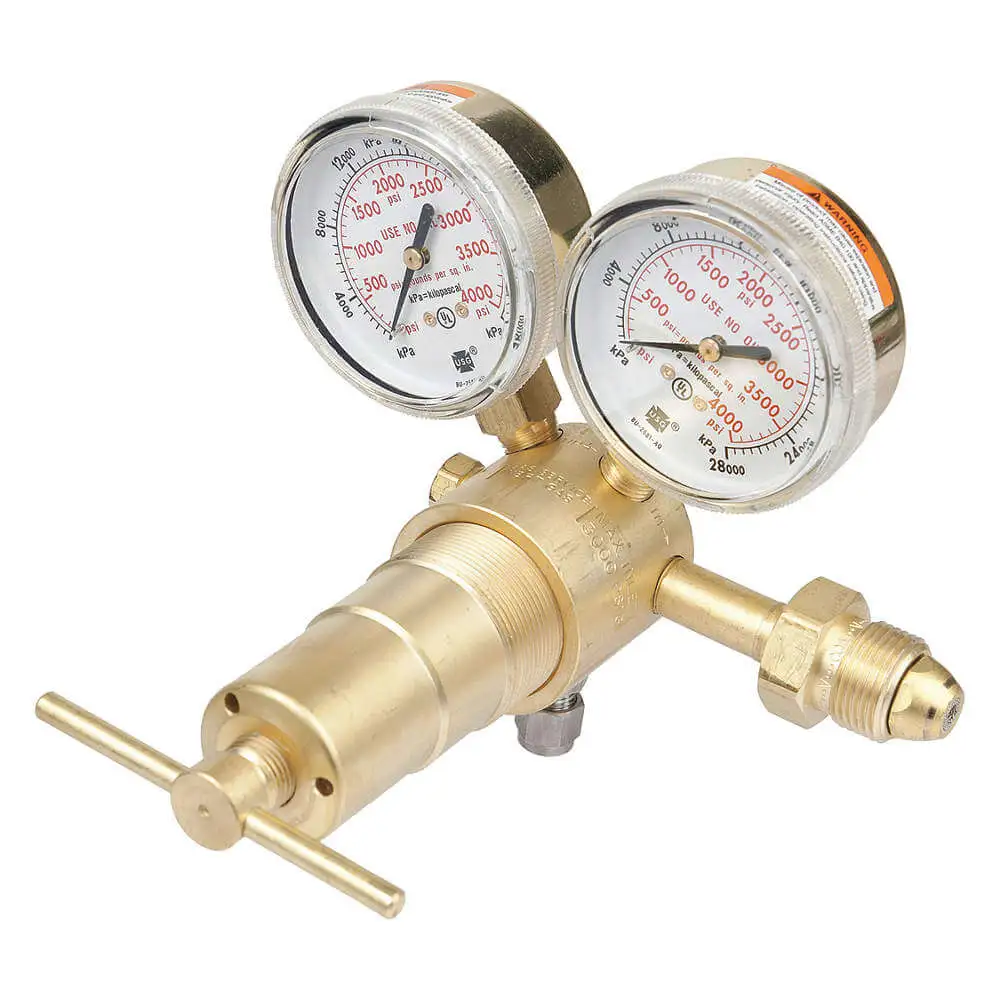Victor acetylene regulators are control devices that maintain the required pressure (2-40 PSIG) of a system by cutting off the flow of a gas or liquid when it reaches a set pressure. These Victor acetylene regulators are suitable for applications where slight delivery pressure rises due to dropping cylinder pressures that would not impact the performance of the work or test results. These Victor acetylene regulators have a maximum inlet pressure of 350 PSIG and feature die-forged brass body, offering robustness, as well as resilience. They offer an adjusting screw with a forged T-handle for comfort and a durable Delrin insert bushing with a stainless ball key for comfortable adjustment. Victor acetylene regulators with adjusting springs are pre-tested for quality and have an accurately machined nozzle for superior flow control.
Uses:
Victor acetylene regulators are used in many commercial and industrial applications, such as home heating furnaces to control natural gases and gas grills to regulate propane. These Victor acetylene regulators are further used in pneumatic automation systems to control compressed air, medical & dental equipment to regulate anaesthesia gases & oxygen, fuel cells to regulate hydrogen and engines to regulate fuel. Victor acetylene regulators also have models that are ideal for use with carbon dioxide, helium, nitrogen, acetylene, argon, hydrogen, methane, propane, natural gas, and other different gases.
Features:
- Victor acetylene regulators have a brass adjusting screw with forged T-handle and Delrin insert bushing for durability and comfortable adjusting.
- These acetylene regulators feature die-forged brass spring housing cap that offers superior durability and strength.
- They feature stem type seat mechanism and stainless steel diaphragm that provides precise enduring service.
- These Victor acetylene regulators come with a stainless ball-in key for comfortable adaptation and have an adjusting spring (pre-tested) for quality guarantee.
- These Victor acetylene regulators have an accurately refined nozzle, offering ideal flow control.
Standards and Approvals:
- Victor acetylene regulators comply with UL252 by ETL standards, ensuring user safety and superior performance.
Frequently Asked Questions:
Q. What happens to acetylene above 15 PSI?
A. Acetylene does not burst under low pressure at normal temperatures. However, it becomes unsafe and spontaneously combustible when compressed to pressure over 15 psi. Beyond 29.4 psi, it becomes self-explosive, and a little shock may compel it to explode even in the lack of air or oxygen.
Q. What is the difference between the acetylene and oxygen regulators?
A. Acetylene regulators are capable of controlling the acetylene pressure from any standard cylinder having pressures up to 500 psi. The design of acetylene regulators is typically similar to the oxygen regulators but is not capable of withstanding such high pressures.
Q. What are high pressure gas regulators?
A. High pressure gas regulators are manufactured to decrease high pressure supplies safely and precisely to system pressure conditions.
Q. What is the difference between a single-stage and two-stage regulator?
A. As the name suggests, the single-stage gas pressure regulators decrease cylinder pressure to outlet pressure in one step. Whereas the two-stage gas pressure regulators decrease cylinder pressure in two steps. However, a two-stage regulator offers steady delivery pressure with no requirement for regular readjustment.
Q. What is the highest secure working pressure for acetylene?
A. 15 PSIG is the maximum working pressure for acetylene. Under no circumstances shall acetylene be developed, piped or operated at pressure over 15 PSIG.
 Change Country
Change Country




